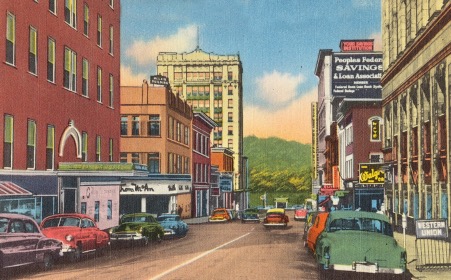If you drive to and from work every day, you may take road signs for granted, thinking that nothing can surprise you on the road you know. But if you're planning a trip to a new country, (un)familiar road signs are extremely important. Before you pack your bags and rent a car, we suggest that you check what kind of road signs may be on your way.
When were road signs invented?
Believe it or not, road signs go back to ancient Rome. The Romans used stones placed beside the road to show travellers the distance to Rome. In those days, literally, all roads led to Rome. The saying referred, and still refers, to the road system that is in the middle and that any traveller can reach from anywhere they start.
Later, in the 1400s, multi-sided signs appeared next to the roads showing travellers the way to the various cities. It wasn't until the early 1900s when motorization began and the auto industry grew larger, that the first need for standardisation of road signs arose. Before the introduction of the Vienna Convention on Road Signs and signals in 1978, many attempts were abandoned at regional and national levels because governments could not achieve uniformity across Europe. However, Rome wasn't built in a day, and neither were road signs. They've come a long way, and they're not going away anytime soon, so you'd better respect them while driving.

Why are road signs needed?
Road signs are international rules that must be followed when driving your own or rented car. They can warn you of potential dangers, inform you of speed limits or road changes, and even give you directions while driving on an unfamiliar road. But hey, they can also inform others about what the BEEP -BEEP experimenting with while driving on the road. They are seriously needed, believe us. So, before you rent a car, take some time and prepare yourself!

Spain road signs
If you hire a car in Spain, please note that Spaniards do not know how to signal when turning right, left or even when leaving roundabouts. The same rules as continental Spain are applied to Spanish islands like the Balearics and the Canaries. If you want to know more about driving in Spain and the road signs you may encounter there, you can do so here >>
France road signs
If you rent a car in France please note that even though you are driving a car during the day, you will have to turn on your lights after passing the round blue sign with ‘allumez vos feux’ phrase. You just entered the area where driving lights are mandatory at all times of the day. If you want to read more about road signs in France, you can find it all here >>
Italy road signs
If you rent a car in Italy please be prepared that road signs or additional panels underneath them can be written not just in Italian language but also in German (South Tyrol), French (Aosta Valley), Slovenian (border with Slovenia), Friulan (Friulli historical region) and Sardinian (Sardinia).
Germany road signs
Did you know that Germany is the only country without a general speed limit on its highways? When renting a car in Germany fasten your seat belt, because it will be a hell of a drive. To read about it more, you can check all the details here >>

EU road signs
Throughout Europe, there are many differences between road signs. In this case, we refer first to the language text and the colour coding of the horizontal sign backgrounds. As a road user, you must also pay attention to graphic design details and the meaning of local regulations, which vary from region to region.
How many different types of road signs do we have?
The Vienna Convention defines six different types of standard road signs that we thought were worth mentioning. As a road user, you are probably familiar with the diamond-shaped danger signs, which are placed at such a distance from the danger area that they have the greatest effect during the day and night. Right-of-way signs are diamond-shaped, white in colour with a yellow diamond inside, mainly indicating the order in which vehicles should pass through the intersection. The most common right-of-way signs are "GIVE WAY" and "STOP", which may differ only in language variations depending on the country you are driving in. The third group of road signs that we consider important are closure signs, which are used to prohibit certain categories of vehicles from entering the road. Motorists can find them off the roads in a circular shape with a white, yellow, but usually blue background, on which symbols or inscriptions can be seen. Mandatory signs tell road users what to do in a particular area. They are usually round, blue in colour, with a white border and white symbols. Note that you only have to obey the signs that are appropriate for your vehicle. Directional signs (information, facility, or service signs) are meant to help you when you're on unfamiliar roads and looking for a gas station, a downtown parking lot, a place to eat, etc. As a motorist, you will usually find these signs in blue with no specific border colour. Finally, directional, location and advisory signs can serve as additional information for you to navigate when driving in a foreign country. Note that these signs are the only group of road signs that can vary in both colour and shape. They can indicate temporary conditions on the road, such as work on the road, construction sites near where you are staying, or even a closed road due to a traffic accident.

Teach me how to read additional panels
Additional panels show and help you, the driver, understand the distance of the signs from the beginning of the dangerous road section in some cases or give you important additional information under hazard, right-of-way, closure, and/or mandatory signs in other cases. We like to think of supplemental signs as giving drivers guidance on what to do when they are unfamiliar with a road sign. For example, alternative plates under the road sign may tell you that exceeding the speed limit is prohibited in that area (they give you some sort of timetable for entry) or that only disabled drivers are allowed to park in that particular parking space. Additional panels can tell you also that stopping on the shoulder of the city centre road is not allowed (this one is pretty common, remember our words) or even that you need to slow down because frogs may be crossing the street (yes, yes, they usually start their breeding season in October - don't complain, it's the cycle of nature).
Learn how to read road signs and understand additional panels and we promise you your car hire experience in a foreign country will be as smooth as possible. Good luck on the road!









